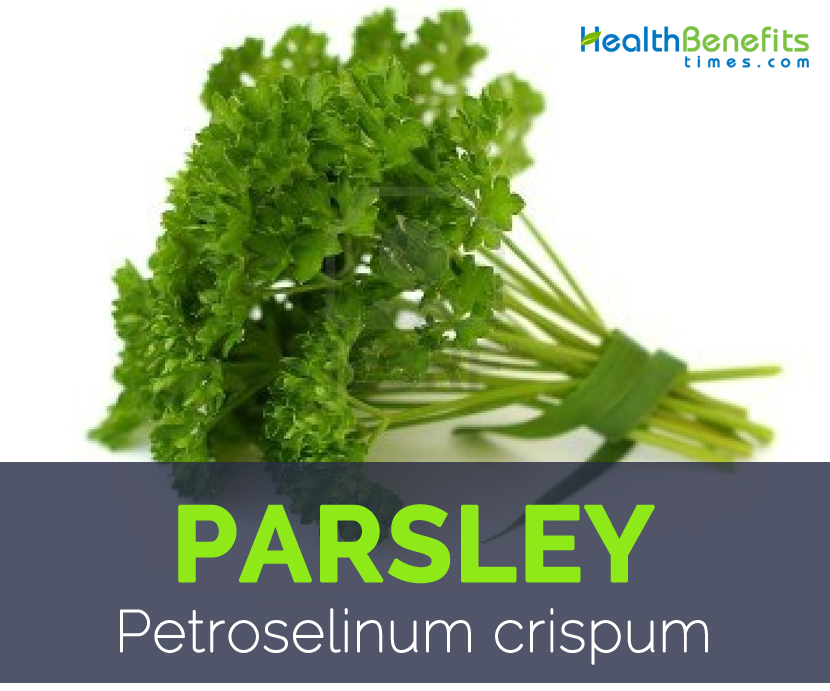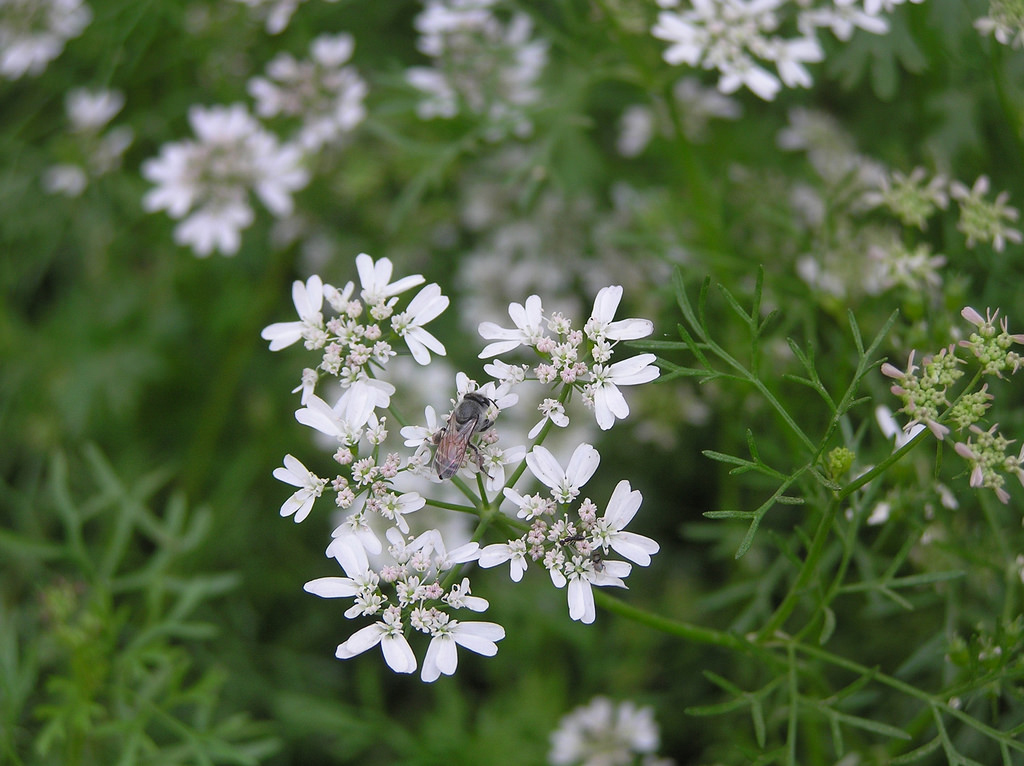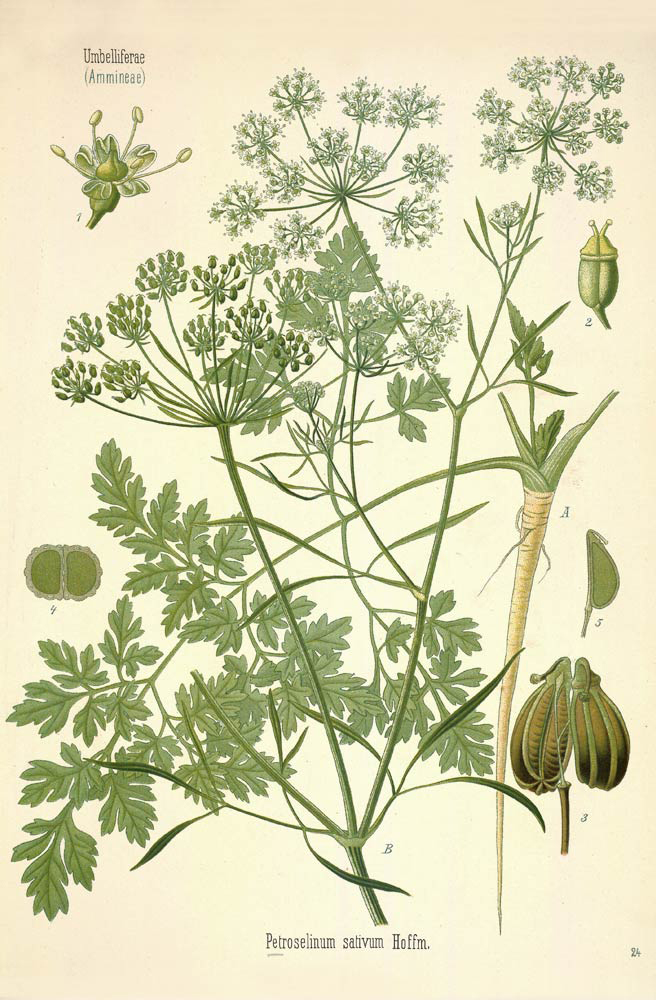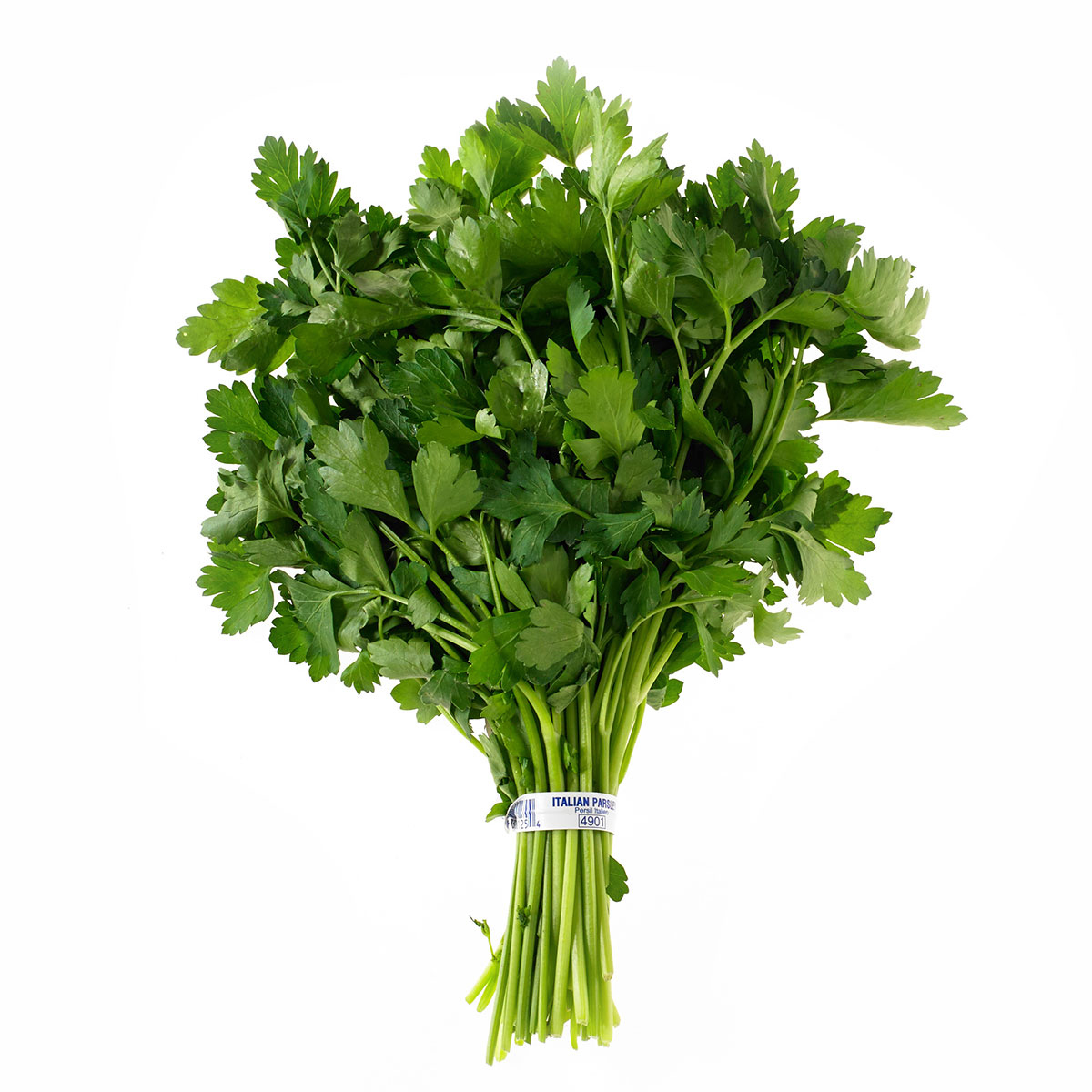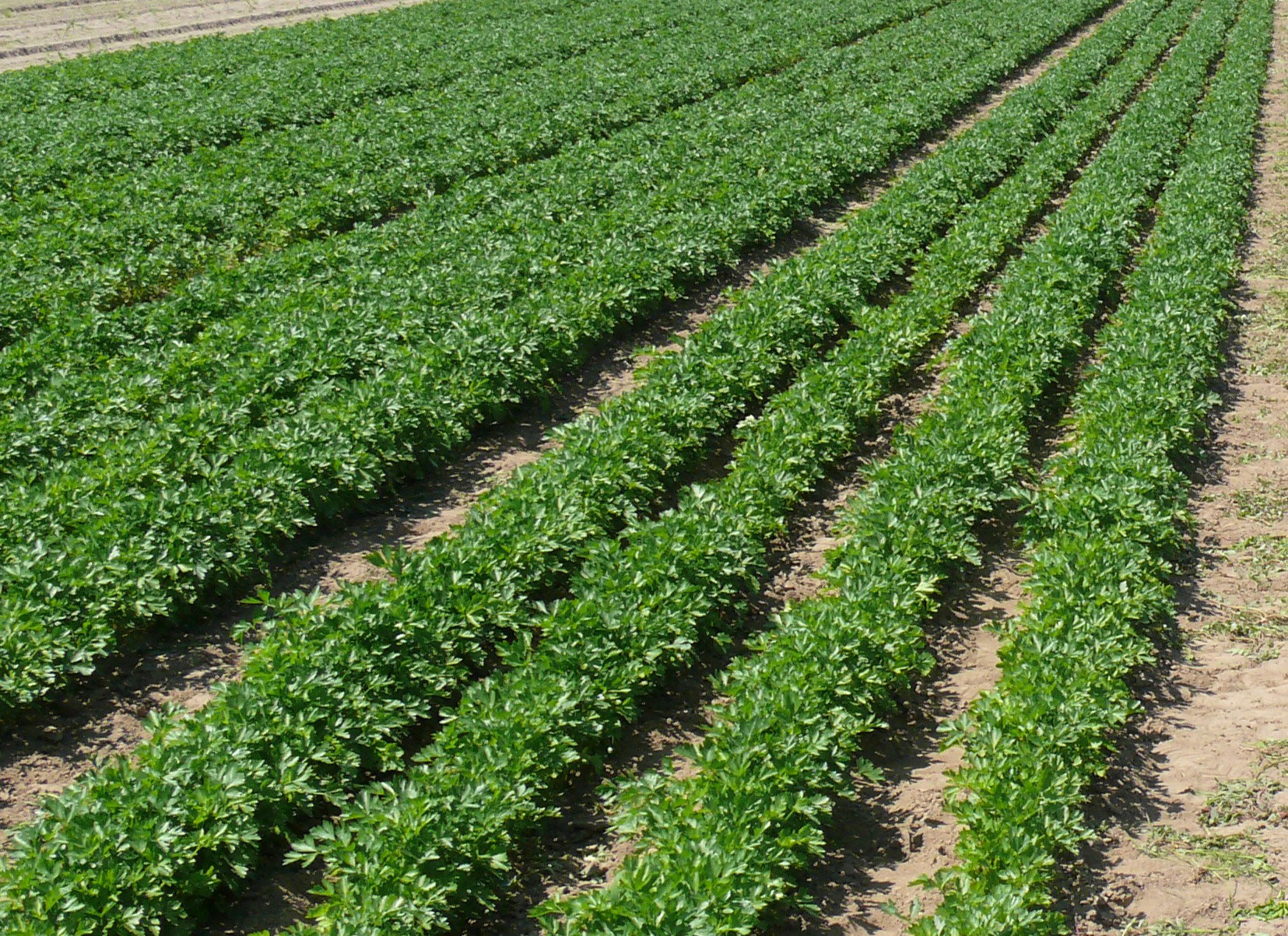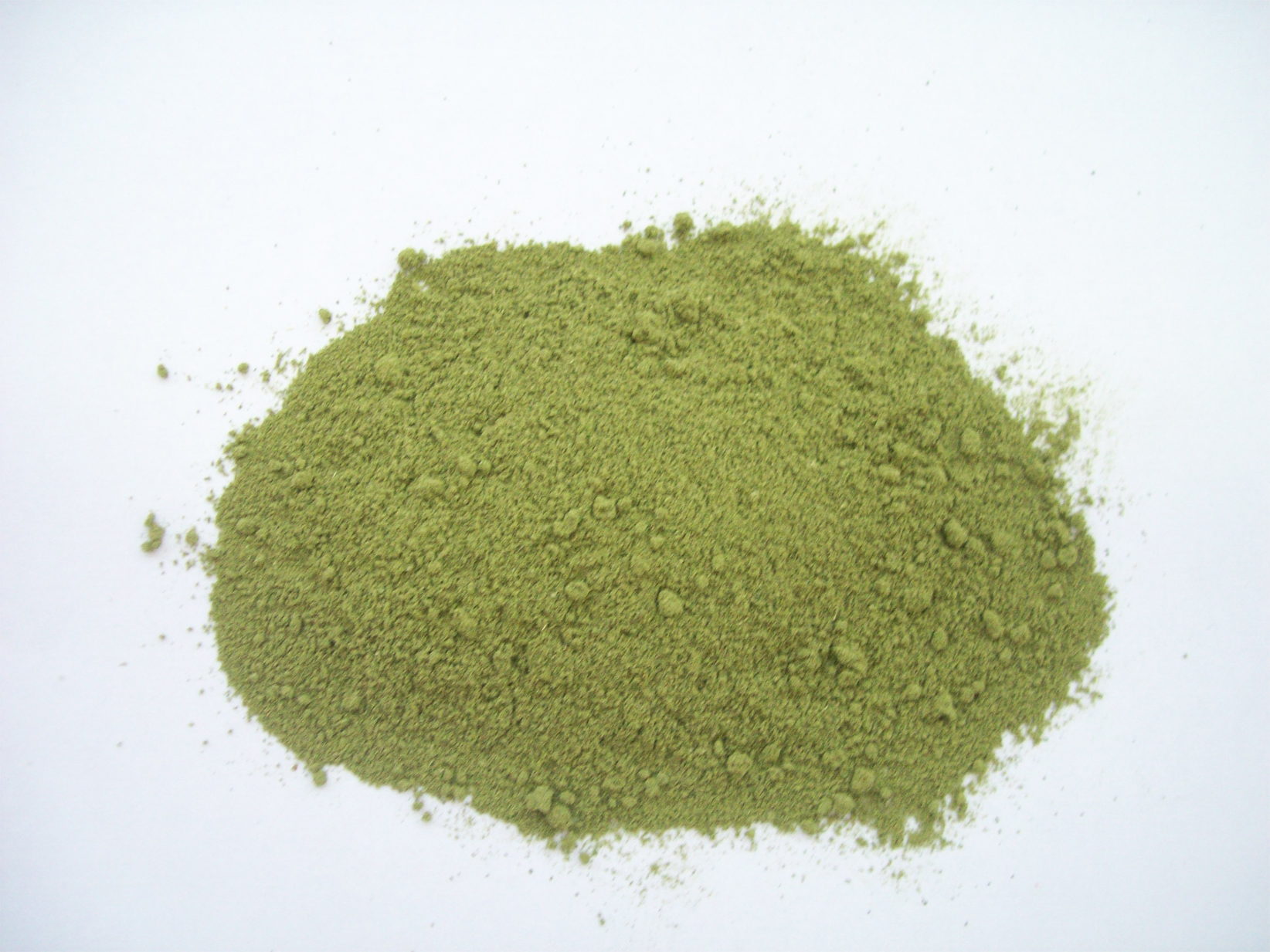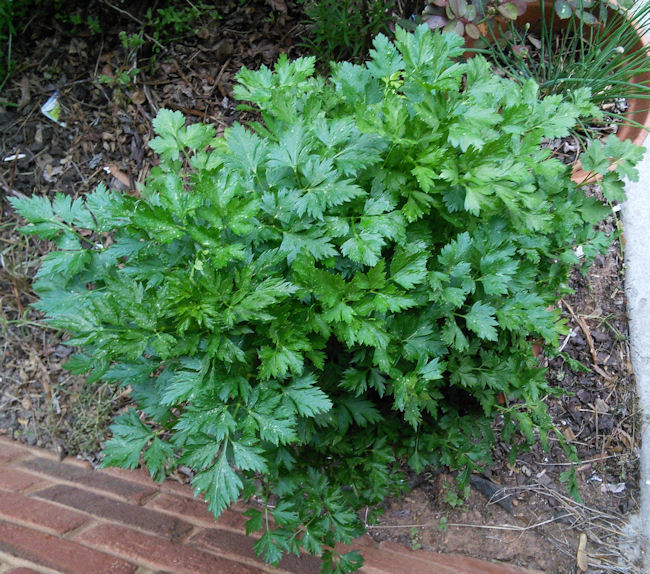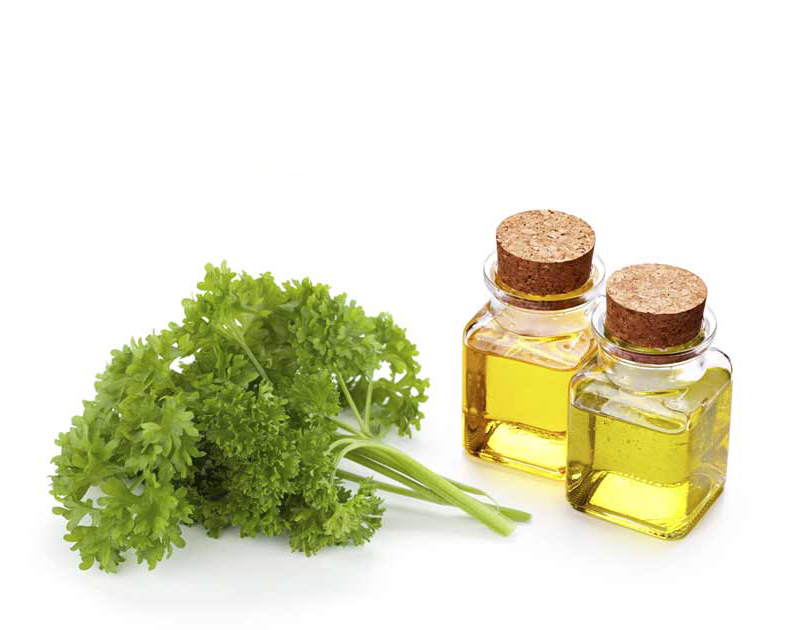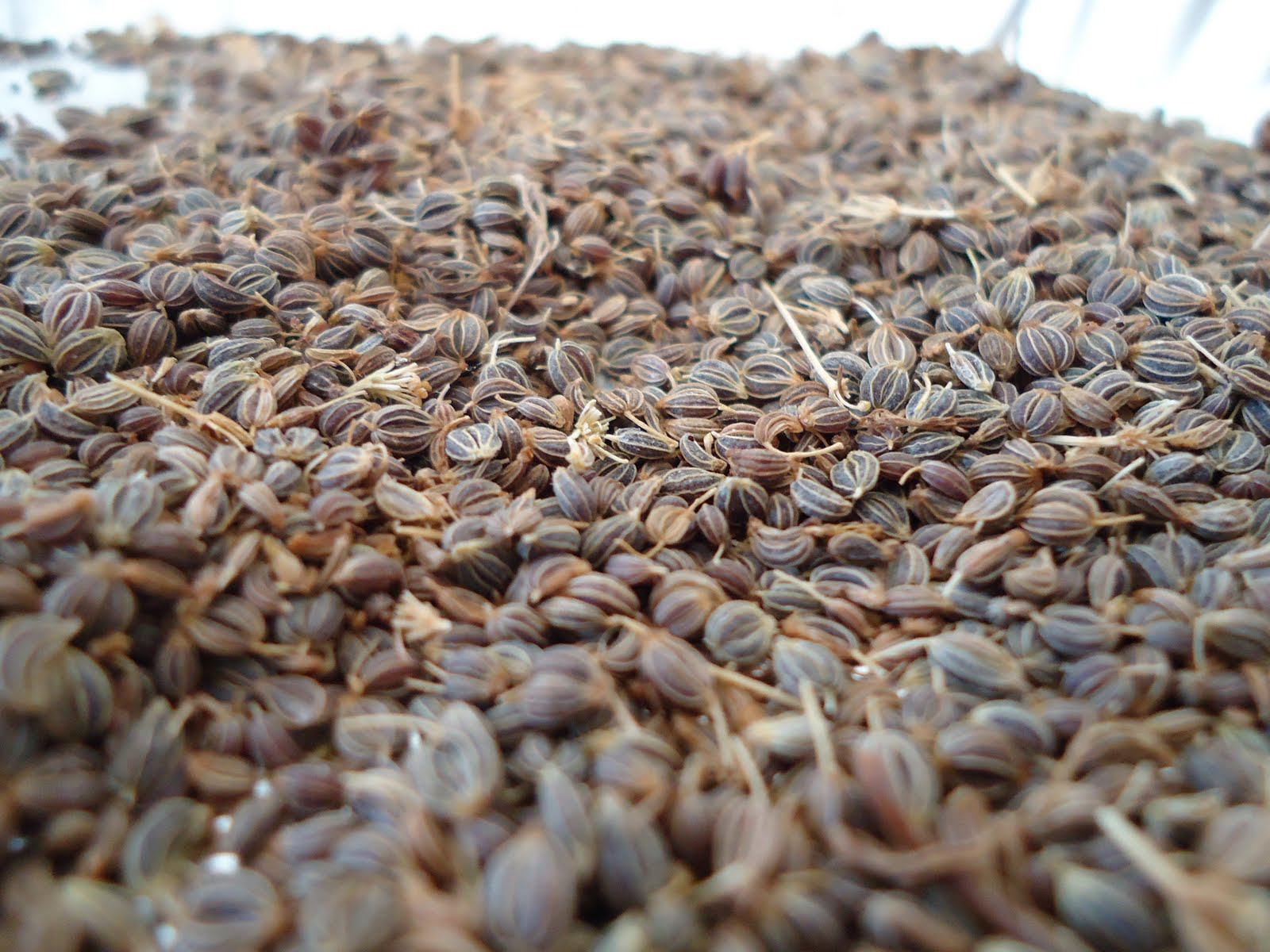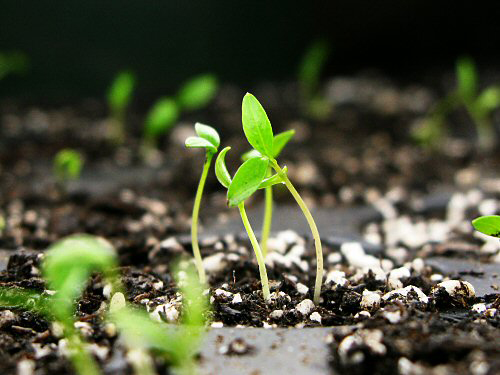| Parsley Quick Facts |
| Name: |
Parsley |
| Scientific Name: |
Petroselinum crispum |
| Origin |
Native to the Mediterranean region of southern Italy, Algeria, and Tunisia |
| Colors |
Bright green (Leaf) |
| Shapes |
Fern-like leaves 10–25 cm (3.9–9.8 in) long that grow from centrally positioned green stem (Leaf) |
| Calories |
22 Kcal./cup |
| Major nutrients |
Vitamin K (820.00%)
Vitamin C (88.67%)
Iron (46.50%)
Vitamin A (36.14%)
Vitamin B9 (22.75%)
|
| Health benefits |
Controls Rheumatoid Arthritis, Helps with Menstrual Pain and Bleeding, Needed for Healthy Hair, Skin, and Eyes, Treatment of Cancer, Anti-Inflammatory Properties, Prevents Kidney Stones, Diuretic effects, Insomnia, Anti-Diabetic Properties, Strengthens the Immune System, Osteoporosis,Protects Eye Health, Pregnancy and Birth Defects, Helps With Digestion by Relieving Constipation, |
Parsley is the common name for a bright green, biennial herb of European origin, Petroselinum crispum, which is extensively cultivated for its leaves, which are used as a garnish or for flavoring food. It is a member of the Apiaceae family of plants. Relatives of this common culinary herb include the garden vegetables carrot, parsnip, and celery. Parsley belongs to the same family as poison hemlock (Conium maculatum L.), a deadly narcotic herb. The word parsley is derived from two Greek words: “petrose,” meaning rock, since it so often pops through rocky terrain as well as stone walls; and “selenium,” an ancient name for celery. So exactly, parsley means “rock celery.” This herb was often planted at gravesides, so the loaded phrase “in need of parsley” meant someone was not long for this world. Some popular common names of Parsley are parsley break stone, garden parsley, rock parsley, persely, and petersylinge. Similarly Curled Leaf, Flat Leaf, Hamburg, French Parsley, Chinese parsley are few of the popular varieties of Parsley which is nowadays grown throughout the world.
Plant
Parsley is a bright green, biennial, plant in temperate climates, or an annual herb in subtropical and tropical areas that thrives in rich, moist soil in full sun or partial shade. It is normally one to two feet tall and grows from a single spindle-shaped taproot producing smooth, many-branched and juicy stems. The bright green leaves are feather-like in appearance, tri-pinnate and finely divided. Some varieties are flat-leafed; others are more compact and curly. Diminutive five-petaled flowers are yellow-green and borne in dense, flat-topped clusters. They bloom in midsummer. The gray-brown seeds are tiny, ribbed and ovate (egg-shaped). Parsley can grow as much as 3 ft. (1 m) tall in its second year as the flower-bearing stems become nearly leafless and reach for the sun.
Leaf
Parsley is a biennial herb, forming a dense rosette of leaves in the first year and flowering in its second year. Parsley is a popular culinary and medicinal herb recognized as one of the functional food for its unique antioxidants, and disease preventing properties. Parsley has bright green, fern-like leaves 10–25 cm (3.9–9.8 in) long that grow from centrally positioned green stem. Leaf stems have stronger taste than leaves. It is mild, agreeable flavor. Taste of parsley depends on the type of soil and climate conditions. Parsley is one the most popular spices in the world. Other than that, parsley is used in cosmetic, pharmaceutical and medical industry.
History
Parsley is native to the Mediterranean region of Southern Europe. Both the crowded, dense-leaved type and the broad open-growing type were described in the 4th century B.C. Parsley was introduced into England from Sardinia in 1548. European colonists brought parsley to the United States in the 17th century, and it continues to be a popular garden vegetable nationwide. It is grown throughout Florida, both as a commercial crop of minor importance in the vegetable producing areas of central and south Florida, and in gardens from Key West to Pensacola. Also, it is a popular container-grown plant for limited-space situations.
Nutritional Value
Apart from their delightful taste parsley is a good source of nutrients, vitamins and minerals. Consuming 100 gram of parsley offers 984 µg of Vitamin K, 79.8 mg of Vitamin C, 3.72 mg of Iron,253 µg of Vitamin A,91 µg of Vitamin B9, 0.089 mg of Copper and 83 mg of Calcium. Moreover many Amino acids like 0.027 g of Tryptophan, 0.073 g of Threonine, 0.071 g of Isoleucine, 0.122 g of Leucine are also found in 100 gram of parsley.
Health benefits of Parsley
Because parsley is loaded with antioxidants, parsley health benefits are numerous. It is a powerful weapon against preventing arthritis, and the phytochemicals found in parsley that protect the plant from viruses, bacteria and fungi may decrease the risk of certain cancers, diabetes, hypertension and heart disease, according to the American Cancer Society.
1. Controls Rheumatoid Arthritis
Parsley has also been discovered effective against rheumatoid arthritis. Vitamin C and beta-carotene found in parsley possess anti-inflammatory properties which help in controlling arthritis. Regular consumption of parsley is believed to speed up the process of uric acid removal, which has been linked to symptoms of arthritis.
2. Helps with Menstrual Pain and Bleeding
Vitamin K present in parsley help to reduce PMS cramps and other menstrual pains by regulating the function of your hormones. Because vitamin K is a blood clotting vitamin, it helps with excessive bleeding during the menstrual cycle and offer pain relief for PMS symptoms.
Excessive bleeding leads to more cramps and pain during your menstrual cycle. Several research show that vitamin K can help with the symptoms of PMS, the opposite is also true- a vitamin K deficiency will only make these symptoms worse.
3. Needed for Healthy Hair, Skin, and Eyes
Sufficient amount of copper are required for the body to create the natural pigment and texture of the skin, hair, and eyes. Parsley plays a part in the development of melanin, which is responsible for giving our skin its brown color as well as our hair and eyes their unique pigment since parsley consists of considerable amount of Copper.
Research has also shown that copper helps build collagen, which is the substance liable for maintaining skin’s youthful appearance and elasticity. Additionally copper is involved in the production of elastin, a substance found in the connective tissue of skin that keeps skin’s flexibility intact.
4. Treatment of Cancer
Researchers have found that a higher consumption of fresh vegetables and fruits have a link to a decreased risk for numerous types of cancer. Research have also shown that increased consumption of vitamin C is connected with a decreased possibility of cancers of the lungs, mouth, vocal chords, throat, colon, rectum, stomach, and esophagus. Parsley consists of 79.8 mg of vitamin C which is 88.67% of the daily recommended value.
5. Anti-Inflammatory Properties
Parsley has traditionally been used in the Mediterranean region for insect bites, toothaches, bruises, and rough skin. According to initial research conducted at the King Saud University by Al-Howiriny et al., parsley showed anti-inflammatory and anti-hepatotoxicity properties. The anti-inflammatory properties reduce in internal inflammations, while the anti-hepatotoxic properties help to cleanse the liver.(1)
6. Prevents Kidney Stones
Kidney stones are actually crystallized deposits of calcium and other minerals in the human urinary tract. The most common form of kidney stones is oxalate stones. Earlier, it was supposed that high calcium intake or high calcium absorption develops kidney stones, but the newest studies show that high dietary calcium intake decreases the risk of kidney stones significantly. In short, dietary calcium does not cause kidney stones, but the additional calcium present in water results in kidney stones. Other factors like high oxalate consumption from leafy vegetables like kale and spinach, as well as reduced fluid consumption can prove to be a big cause for kidney stones.
7. Diuretic effects
Parsley has been used as a diuretic that helps in controlling numerous diseases such as kidney stones, urinary tract infections, and gallbladder stones. Edema is a medical disorder where a patient retains fluid in the body more than what he or she is supposed to hold under normal circumstances. The body swells because of fluid accumulation. If you are suffering by this condition, a few teaspoons of parsley juice can provide some quick relief. The roots of parsley are also very much useful in counteracting kidney stones. Adding parsley roots to boiling water and drinking it on a daily basis is known to be effective as a general cleanser for the body.
8. Insomnia
Parsley consists of Iron which is useful in treating insomnia in the human body and also improves the sleeping habits and quality of people by regulating their circadian rhythms. Proper red blood cell count can also result in less fluctuation of blood pressure, which can often keep people awake at night.
9. Anti-Diabetic Properties
Parsley was traditionally used as a medicine for diabetes in Turkey. In order to scientifically legalize this claim, research was done at Marmara University in Istanbul, Turkey. The research showed that diabetic rats that were given parsley actually displayed a decrease in their blood sugar levels over a period of a month. The research specifies that parsley can be used for diabetic control.(2)
10. Strengthens the Immune System
The vitamins, minerals, and antioxidants found in parsley are beneficial for strengthening immunity. Vitamins such as vitamin C, vitamin A, vitamin K, folate, and niacin each act on different aspects of the immune system. Vitamin A acts directly on lymphocytes or white blood cells, thus increasing their effect. The chlorophyll contained in parsley has anti-bacterial and anti-fungal properties as well. Studies have showed that parsley contains antioxidant properties and antibacterial properties, making it an ideal source for various home remedies.(3)
11. Osteoporosis
Parsley is effective for osteoporosis and is helpful in maintaining bone health. Osteoporosis occurs due to exhausted levels of calcium in the bones and also due to an amino acid called homocysteine. This amino acid can be broken down by the intake of folic acid. Due to this aspect, apart from dairy products and vegetables, parsley is regarded as one of the best sources of calcium. It also contains an appropriate amount of folic acid, which may help to break down homocysteine.
12. Protects Eye Health
Parsley consists of 253 µg of vitamin A which is a critical part of the rhodopsin molecule, which is activated when light shines on the retina, and it sends a signal to the brain, which result in vision. Beta carotene, the form of vitamin A found in plants, plays a role in preventing macular degeneration, the leading cause of age-related blindness.
In an Age-Related Eye Disease Study, people at high risk for the disease who took a daily multiple vitamin that included vitamin A, vitamin C, vitamin E, zinc and copper, had a 25 percent reduced risk of advanced macular degeneration during a six-year period. This proves that regular intake of vitamin is beneficial for better eye health.
13. Pregnancy and Birth Defects
Vitamin B9 is one of the reliable resources for limiting defects during pregnancy and the birth of a child. It is a common situation that pregnant women maintaining a diet deficient of this vitamin are far less likely to deliver a healthy child. The birth defects caused by its deficiency include neural tube defects. Thus, Vitamin B9 rich foods like parsley must be included appropriately to effectively improve the chances of giving birth to a healthy, happy child.
14. Helps With Digestion by Relieving Constipation
Magnesium helps to relax muscles within the digestive tract, including the intestinal wall, which controls your ability to go to the bathroom. Because magnesium helps neutralize stomach acid and moves stool through the intestines, taking magnesium supplements is a natural way to help you poop!
When researchers from the National Institute of Health and Nutrition in Tokyo studied the effects of magnesium in the diet of 3,800 women, low magnesium intake was associated with significant increases in the prevalence of constipation.
https://www.youtube.com/watch?v=tZjP1O-28MY
How to Eat
- The herb is widely used as a garnish. Many dishes are served with fresh green chopped parsley spread on top.
- It has been used in preparation of many popular dishes in Mediterranean and European cuisine since ancient times.
- It is one of the common ingredients in famous Mediterranean green sauce, “salsa verde”, a cold sauce made of parsley, capers, garlic, onion, anchovies, olive oil, and vinegar.
- Freshly chopped parsley is a great addition to green salad.
- Freshly and dry parsley leaves can be used in the preparation of chutney, dips, pesto, etc.
- In southern and central Europe, parsley is part of bouquet garni, a bundle of fresh herbs used as an ingredient in stocks, soups, and sauces.
- Freshly chopped green parsley is used as a topping for soups such as chicken soup, green salads, or salads such as salade Olivier, and on open sandwiches with cold cuts or pâtés.
- Parsley is the main ingredient in Italian salsa verde, which is a mixed condiment of parsley, capers, anchovies, garlic, and bread soaked in vinegar.
- In Brazil, newly chopped parsley and freshly chopped scallion are the main ingredients in the herb seasoning called cheiro-verde, which is used as key seasoning for major Brazilian dishes, including rice, beans, soups, meat, chicken, sauces, fish, stews, vegetables, salads, condiments, and stocks.
- In some Brazilian regions, chopped parsley may be replaced by chopped coriander.
- Parsley is a key ingredient in numerous Middle Eastern salads such as Lebanese tabbouleh.
Other Traditional uses and benefits of Parsley
- Chewing parsley can aid in elimination of bad breath, particularly after consumption of garlic.
- Tea made of parsley improves blood circulation.
- Leaves can be used in treatment of superficial wounds, while juice squeezed from a root reduces swelling.
- Parsley is used to promote menstruation, facilitate childbirth, and increase female libido.
- Parsley juice also prevents the secretion of histamine; it is beneficial in treating hives and relieving other allergy symptoms.
- A decoction of parsley root can help eliminate bloating and decrease weight by eliminating extra water gain.
- Parsley has also been used traditionally as a liver tonic and as a means of breaking up kidney stones.
- The saponin content of parsley may help relieve coughs.
- Parsley root is laxative and its carminative action can relieve flatulence and colic.
- Parsley’s high chlorophyll content makes this beneficial herb a natural as a tasty breath freshener.
- Freshly gathered leaves of parsley have been used as a poultice to relieve breast tenderness in lactating women.
- Parsley poultices may also soothe tired, irritated eyes, and speed the healing of bruises.
- The juice will relieve the itch and sting of insect bites, and serves well as a mosquito repellent.
- A juice-soaked gauze pad can be applied to relieve earache or toothache, or used as a face wash to lighten freckles.
- The powdered seeds, sprinkled on the hair and massaged into the scalp for three days, are a folk remedy said to stimulate hair growth.
- Parsley has also been used as a hair rinse in efforts to eradicate head lice.
Other Facts
- Parsley is used in cosmetic industry for the preparation of soaps and body lotions that are particularly good for dry skin.
- It is used in making an attractive border or edging plant for ornamental garden beds.
Buying & Storing Tips
- To obtain a rich as well as exceptional taste, choose the fresh variety of parsley instead of choosing the dried ones.
- While purchasing fresh parsley, usually choose the stock which has a radiant green color and appears fresh and sharp.
- Avoid bundles along with wilted or even yellowish leaves, since this shows that the stock has got over-matured or even been damaged.
- When buying dried parsley flakes, search for the variety which is organically produced, since this prevents the side-effects of the herbs which have been irradiated.
- The best practice to keep fresh parsley is simply by putting it within a plastic bag, inside the refrigerator. In case there are several signs of wilting, clean the parsley or even sprinkle it with some water, without totally drying it, just before storing in the fridge.
- In case of flat leaf parsley, dry it by laying it out in one layer, on the clean bit of cloth. After this, put the stock in the securely enclosed container as well as store in the cool, dry as well as dark place.
How to use parsley in cooking
Parsley has numerous more uses than only a garnish. It may be included with salads, soups, rice dishes or perhaps homemade vegetable and fruit juices prepared in the blender or even juicer. Here are some instances of the best way to utilize parsley within your kitchen:
- Sprinkle raw chopped parsley above your favorite salad.
- Add chopped parsley to salad dressings just like vinaigrette.
- Add chopped parsley to mayonnaise.
- Add chopped parsley to an omelette just before cooking.
- Add parsley to rice dishes.
- Add chopped parsley to stocks as well as gravies.
- Add chopped parsley to clear or even creamy soups.
- Add to mashed potato as well as homemade meatballs or even beef burgers.
- Add to all homemade dishes just like spaghetti bolognaise, shepherd’s pie etc.
- Stuff within fish, chicken or any other poultry along with parsley just before roasting or grilling.
- Sprinkle over seafood and make use of whenever cooking mussels.
- Mix several chopped parsley along with butter or even essential olive oil and spread on toasted crusty bread.
- Add to homemade sauces just like pesto and herby sauces.
- Add freshly sliced parsley to homemade stuffing as well as paté.
- Fry after a little garlic and also consume along with grilled meat or fish.
- Rub the exterior of the chicken or even fish with butter, olive oil as well as parsley.
Quick Serving Tips
- Garnish– Fresh parsley is actually a delicate as well as mild leaf and could be included with any kind of dish during the time of garnish. In this manner, the nutrients will probably be preserved and won’t evaporate within the cooking process. Pasta is certainly one well-known preparation exactly where parsley is thoroughly utilized.
- Soups – Parsley could be included in soups just like tomato soups as well as sauces just before serving for additional flavor as well as aroma.
- Salads and juices– Parsley could be ingested straight in fruit salads, vegetable salads as well as vegetable or fruit juices.
Fresh and dried parsley could be both utilized for including taste to numerous food preparations.
Possible Parsley Side Effects
1. Headaches
A headache may perhaps take place with a greater usage of parsley, Drugs.com reports. Headaches generally pass as you get familiar with the parsley, however when they carry on, you’ll desire a physician’s counsel. By eliminating parsley through the diet plan as well as supplement list, you’ll be able to avoid this side-effect from re-occurring. Confer with your own primary health care provider should your headache not fade right after stopping the usage of parsley. It may take place like a sign of a natural medical problem which you may not be conscious of.
2. Lack of Equilibrium
You might notice a lack of balance that may result in a fall. Till you’ve seen your physician, keep hallways as well as entryways well-lit. An extensive medical evaluation let you realize the reason for this one, in case you go through it.
3. Kidney Damage
Warning signs of kidney damage may well take place along with the usage of using this supplement. You’ll need health care to evaluate your complete health and and also to deal with this particular kidney damage, should this turned into a difficulty. Laboratory work and close observation of kidney damage should happen in case you go through this particular side effect from an over-use of parsley.
4. Convulsions
Seizure activity just like convulsions can happen using the over-consumption of parsley supplements, states Drugs.com. An imbalance or anomaly in mind may possibly force you to blank out or even send the body into unmanageable writhing, jerking movements. Seizures might be experienced by you even in case you have never had a seizure previously. When you experience convulsions a visit to the hospital to deal with the convulsions is much more than warranted.
Parsley – Petroselinum crispum Facts
Parsley is surely an herb that had originated from the Mediterranean region of south Italy, Algeria as well as Tunisia. This particular herb is well known clinically as Petroselinum crispum also it is probably the family of Apiaceae. Relatives of this common culinary herb include the garden vegetables carrot, parsnip, and celery. Parsley is a biennial herb, forming a dense rosette of leaves in the first year and flowering in its second year. It is a popular culinary and medicinal herb recognized as one of the functional food for its unique antioxidants, and disease preventing properties. Taste of parsley depends on the type of soil and climate conditions. Parsley is one the most popular spices in the world. Other than that, parsley is used in cosmetic, pharmaceutical and medical industry.
| Name |
Parsley |
| Scientific Name |
Petroselinum crispum |
| Native |
Native to the Mediterranean region of southern Italy, Algeria, and Tunisia |
| Common/English Name |
Parsley breakstone, garden parsley, rock parsley, persely, and petersylinge |
| Plant Growth Habit |
Bright green, biennial, plant in temperate climates, or an annual herb in subtropical and tropical areas. |
| Growing Climate |
Needs moisture and ample sunlight to grow. |
| Soil |
Rich, well-drained soil, rich in minerals. |
| Plant Size |
One to two feet in height |
| Root |
Taproot |
| Stem |
Erect stems |
| Leaf |
Fern-like leaves 10–25 cm (3.9–9.8 in) long that grow from centrally positioned green stem. Leaf stems have stronger taste than leaves. |
| Leaf Color |
Bright green |
| Leaf Flavor |
Mild, agreeable flavor |
| Leaflets |
Numerous 1–3 cm (0.4–1.2 in) leaflets |
| Flower |
Parsley produces an umbel of numerous 2 mm diameter yellow to yellowish-green flowers. Small flowers are radially symmetrical with five small sepals, five petals, and five stamens. |
| Seed |
Tiny, gray-brown, ribbed, and egg-shaped (ovate) 2–3 mm long, with prominent style remnants at the apex. |
| Varieties/Types |
Curled Leaf, Flat Leaf, Hamburg, French Parsley, Chinese Parsley |
| Major Nutrition |
Vitamin K (phylloquinone) 984 µg (820.00%)
Vitamin C (Ascorbic acid) 79.8 mg (88.67%)
Iron, Fe 3.72 mg (46.50%)
Vitamin A, RAE 253 µg (36.14%)
Vitamin B9 (Folate) 91 µg (22.75%)
Copper, Cu 0.089 mg (9.89%)
Calcium, Ca 83 mg (8.30%)
Magnesium, Mg 30 mg (7.14%)
Potassium, K 332 mg (7.06%)
Tryptophan 0.027 g (6.14%) |
| Health Benefits |
- Controls Rheumatoid Arthritis
- Helps with Menstrual Pain and Bleeding
- Needed for Healthy Hair, Skin, and Eyes
- Treatment of Cancer
- Anti-Inflammatory Properties
- Prevents Kidney Stones
- Diuretic effects
- Insomnia
- Anti-Diabetic Properties
- Strengthens the Immune System
- Osteoporosis
- Protects Eye Health
- Pregnancy and Birth Defects
- Helps With Digestion by Relieving Constipation
|
| Calories in 1cup (100gm) |
22 Kcal |
References:
Comments
comments


